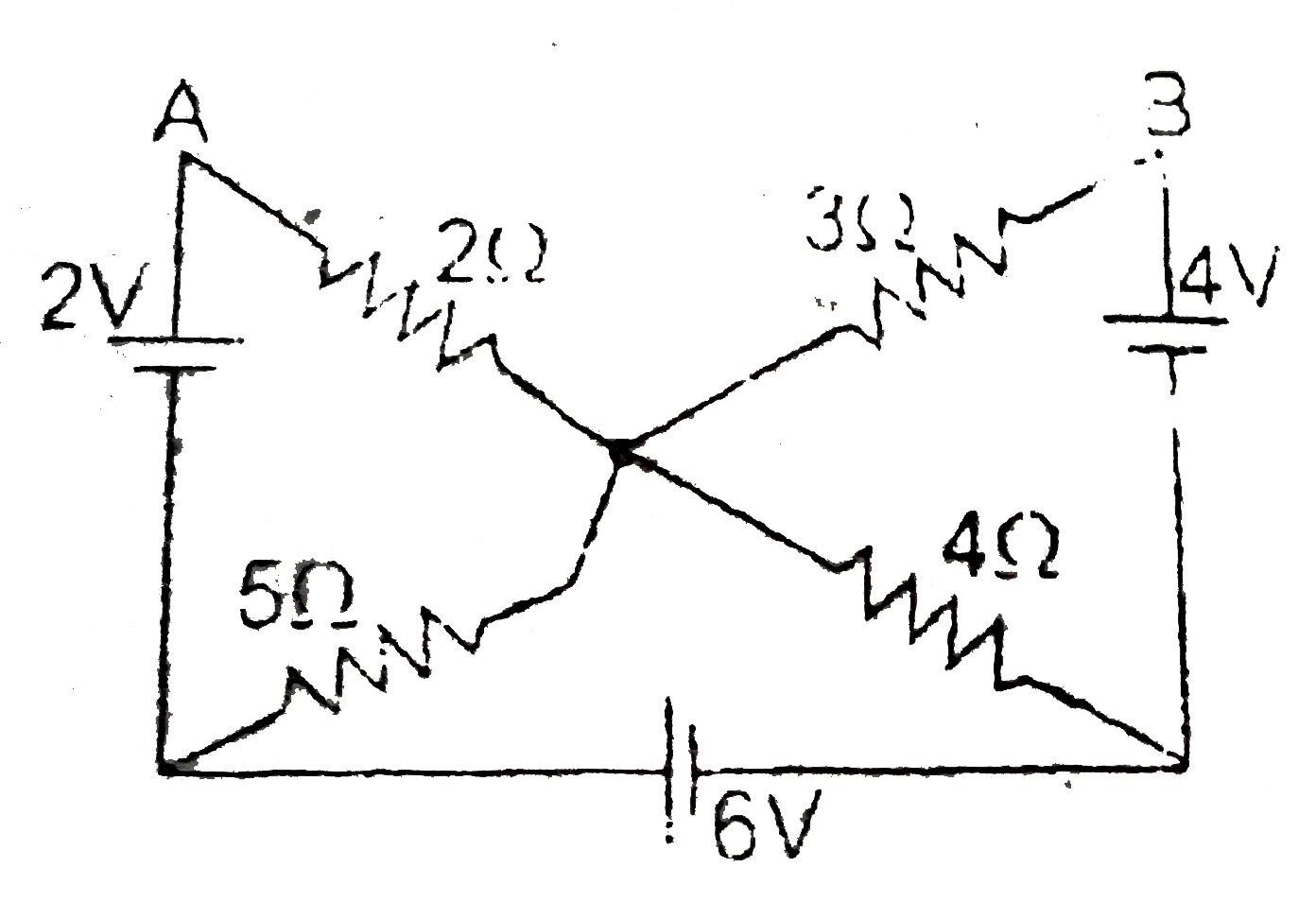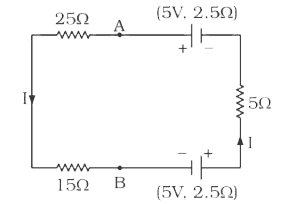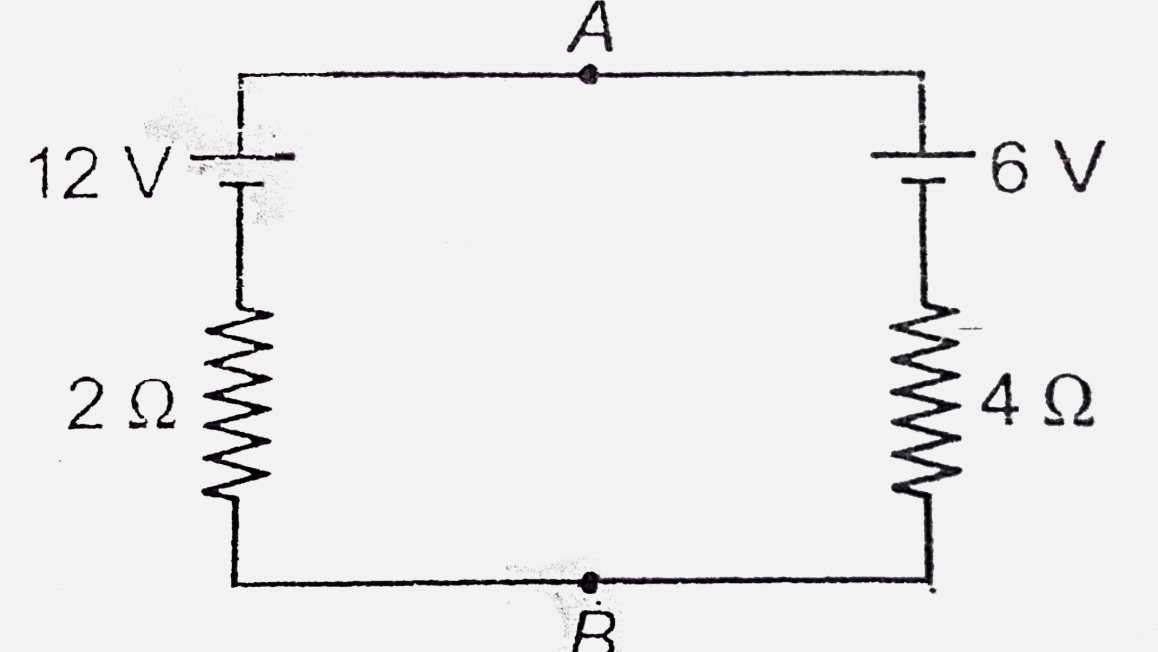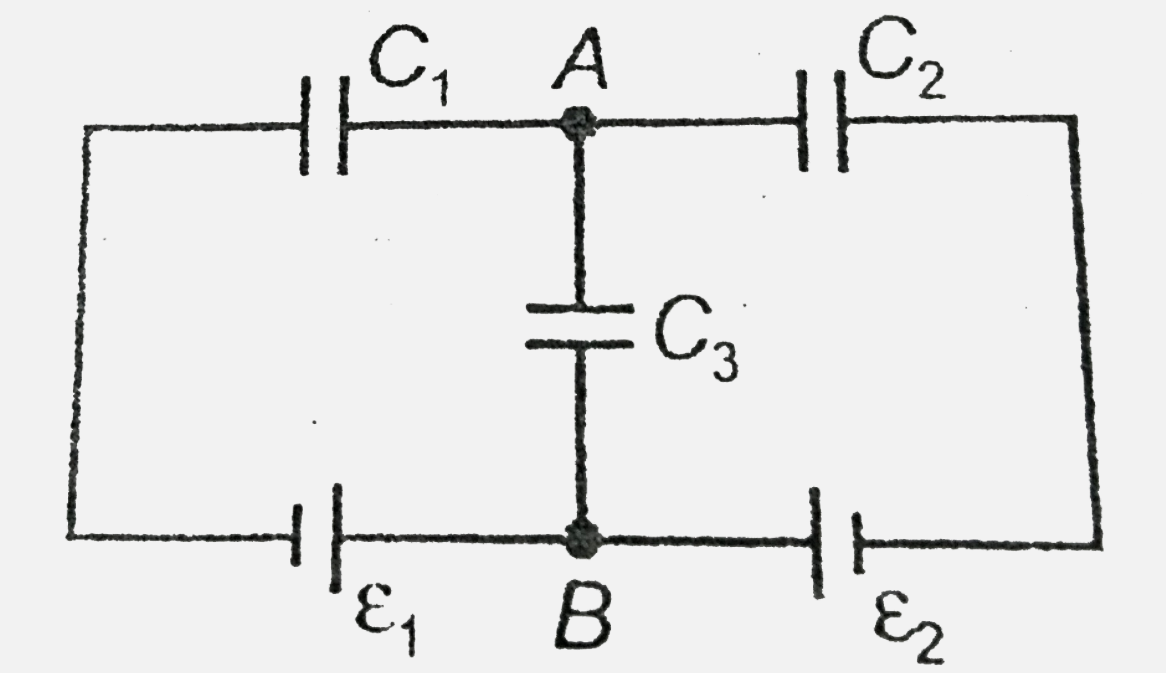In the given branch of as circuit a current is flowing, where is time in second . At , the potential difference between points and is

The correct Answer is:A
constant
At
Now,
Topper's Solved these Questions
- BOOK - DC PANDEY ENGLISHCHAPTER - ELECTROMAGNETIC INDUCTIONEXERCISE - Level 1 Subjective21videos
ELECTROMAGNETIC INDUCTION
- BOOK - DC PANDEY ENGLISHCHAPTER - ELECTROMAGNETIC INDUCTIONEXERCISE - Level 2 Single Correct37videos
ELECTROMAGNETIC INDUCTION
- BOOK - DC PANDEY ENGLISHCHAPTER - ELECTROMAGNETIC INDUCTIONEXERCISE - Level 1 Objective36videos
ELECTROMAGNETIC INDUCTION
- BOOK - DC PANDEY ENGLISHCHAPTER - CURRENT ELECTRICITYEXERCISE - Medical entrances gallery97videos
CURRENT ELECTRICITY
- BOOK - DC PANDEY ENGLISHCHAPTER - ELECTROMAGNETIC WAVESEXERCISE - Sec C22videos
ELECTROMAGNETIC WAVES
Similar Questions
Potential difference between points A and B (i.e. VA−VB) is -----
 View Solution
View SolutionIn the given branch PQ of a circuit, a current / = (2+ + 3) A is flowing where t is time in second. Then the value of potential difference (Vp−Vq) at t = 2 s will be
 View Solution
View SolutionIn the circuit shown, the potential difference between A and B VAandVB is equal to_______V.
 View Solution
View SolutionIn the circuit shown in the figure , no current flows through the 8Omega resistor, then the potential difference between points A and B(V_A - V_B) is
_PHY_E01_001_Q01.png) View Solution
View SolutionIn the given circuit, if potential difference between points A and B is 4V. Then, resistance X is
 View Solution
View SolutionPotential difference across AB , i.e., VA−VB is
 View Solution
View SolutionFind the potential difference VA−VB between points A and B of the circuit shown in figure.
 View Solution
View SolutionThe potential difference (VA−VB) between the point A and B in the given figure is
 View Solution
View SolutionThe potential difference (VA−VB) between the point A and B in the given figure is
 View Solution
View SolutionThe network shown in figure is a part of a complex network. When the potential difference between points B and A(VB−VA) is 15V, then the rate of change of current is
 View Solution
View Solution

